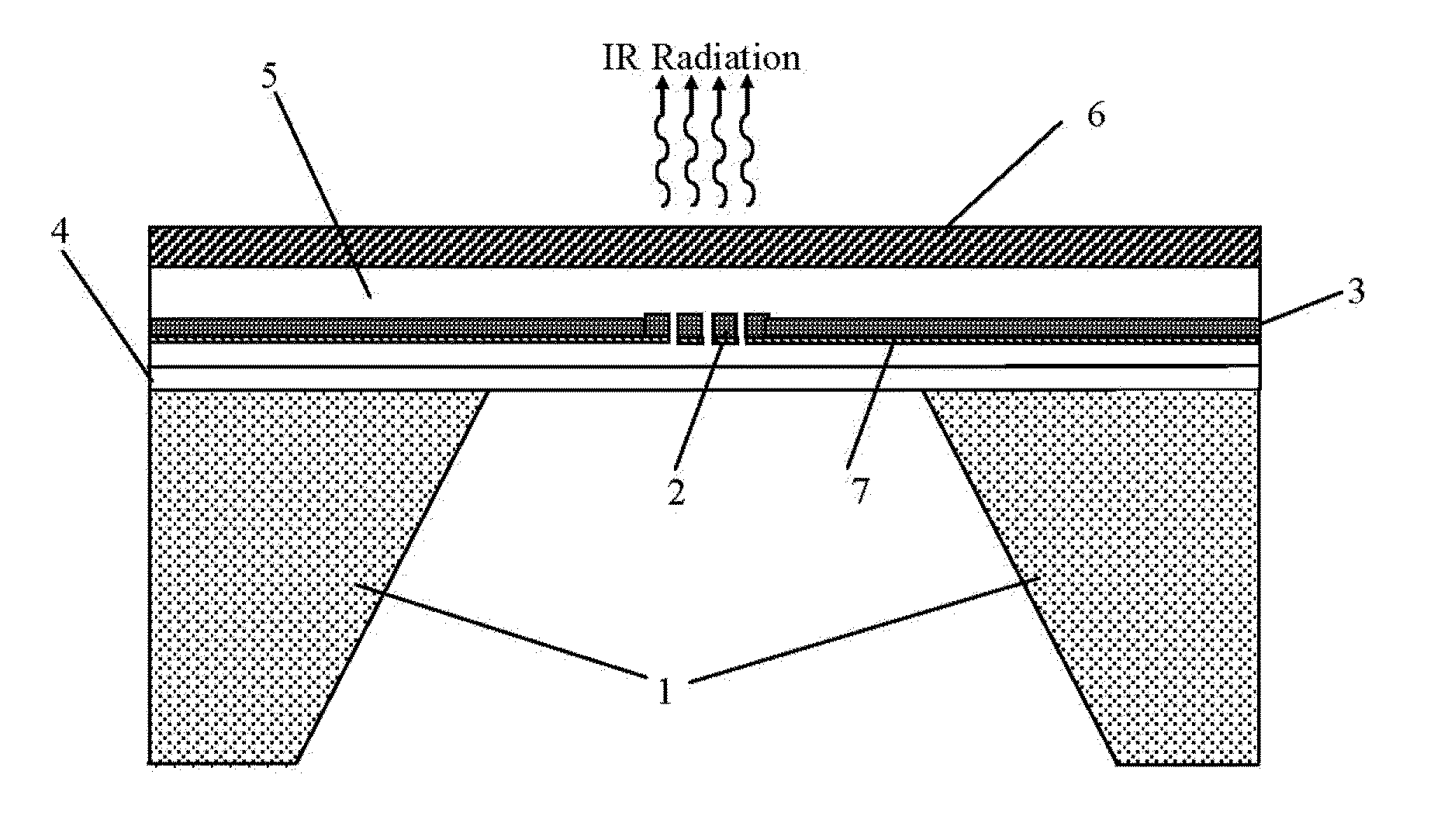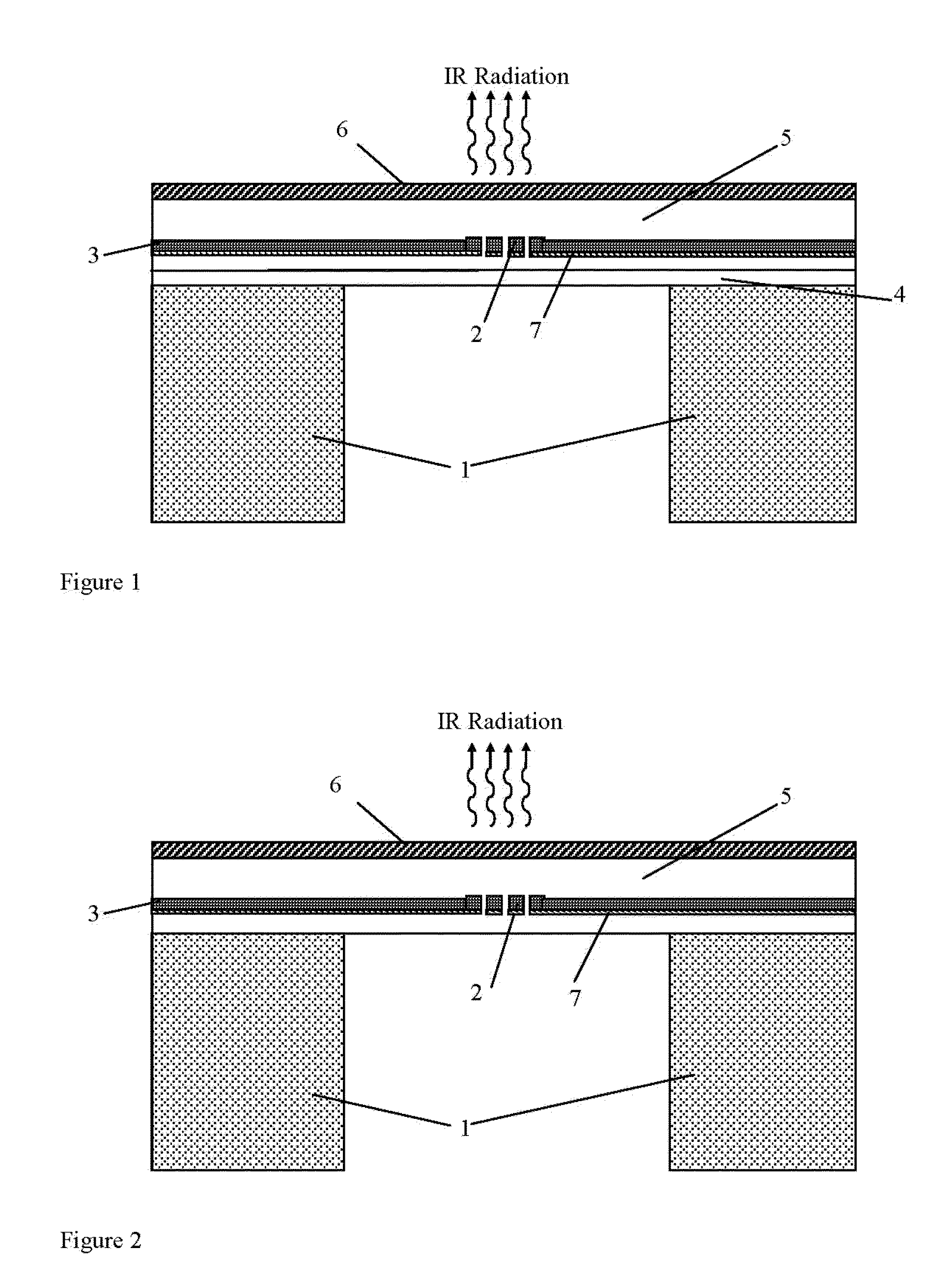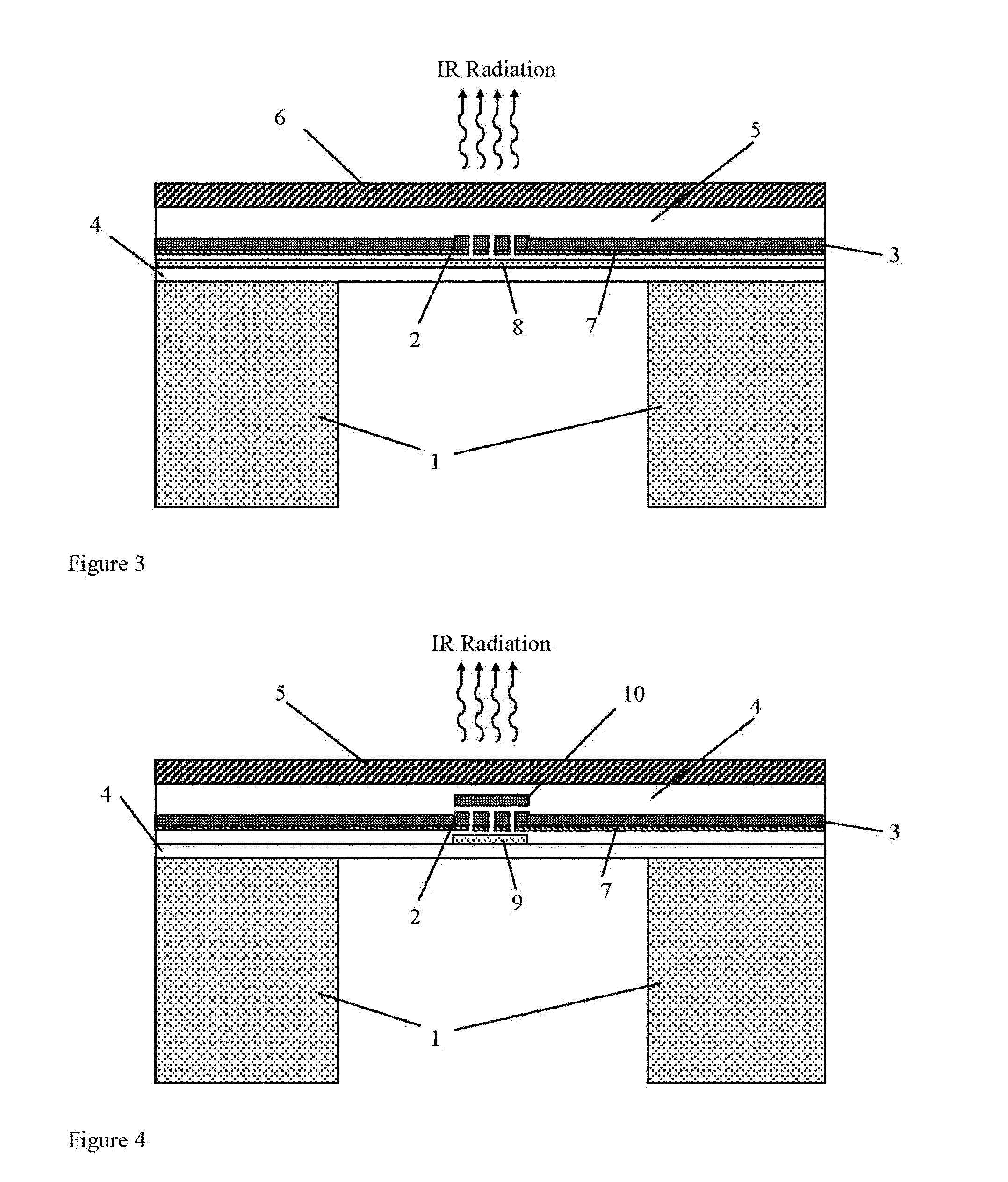Ir emitter and ndir sensor
- Summary
- Abstract
- Description
- Claims
- Application Information
AI Technical Summary
Benefits of technology
Problems solved by technology
Method used
Image
Examples
Embodiment Construction
[0057]Embodiments of the present invention seek to improve on the state of the art devices by using a CMOS layer of tungsten both as part of a heater which emits infrared radiation and an interconnect metal for electronic devices. The IR emitter is embedded into a dielectric membrane defined by etching the silicon substrate. The etching may be done by a Deep Reactive Ion (DRIE) technique. Such a device can operate reliably at high temperatures (well above 600° C.) due to the use of the tungsten heater. Moreover the use of the tungsten layer within a CMOS process ensures very high stability, long term reliability and high reproducibility. This is in contrast to heaters fabricated by other techniques than CMOS such as screen printing. To further improve the reliability, the tungsten heater may have a titanium / titanium nitride liner. Furthermore, the use of the CMOS technology to fabricate the device results in lower fabrication costs and allows circuitry to be integrated on the same c...
PUM
 Login to View More
Login to View More Abstract
Description
Claims
Application Information
 Login to View More
Login to View More - R&D
- Intellectual Property
- Life Sciences
- Materials
- Tech Scout
- Unparalleled Data Quality
- Higher Quality Content
- 60% Fewer Hallucinations
Browse by: Latest US Patents, China's latest patents, Technical Efficacy Thesaurus, Application Domain, Technology Topic, Popular Technical Reports.
© 2025 PatSnap. All rights reserved.Legal|Privacy policy|Modern Slavery Act Transparency Statement|Sitemap|About US| Contact US: help@patsnap.com



